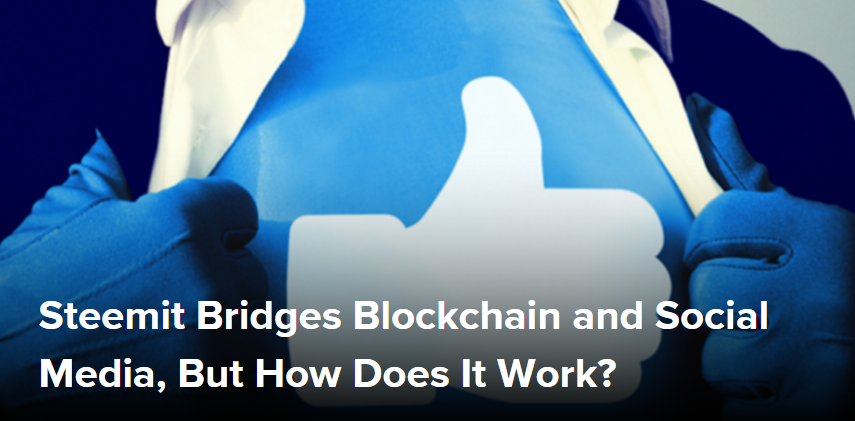Steemit Bridges Blockchain and Social Media, But How Does It Work ...

When an obscure cryptocurrency with a total market cap of approximately $14m skyrockets to over $400m, people take notice.
But, when that cryptocurrency forms the backbone of a social media entity rewarding people for creating content, sometimes with thousands or tens of thousands of dollars for single posts, excitement and skepticism ensues.
Launched in March and gaining prominence in July, Steemit, a self-described "blockchain-based social media platform", has seen this level of notoriety in just its first few months of operation. To date, it has polarized blockchain experts while winning scores of newcomers to the technology.
The brain-child of Daniel Larimer, founder of BitShares, and Ned Scott, a former financial analyst, Steemit aims to provide a place for individuals to create content, promote the content they believe is good and comment on stories -- all while earning money.
But Steemit is more than just a website for earning spare change.
It's an actual blockchain built on a piece of technology developed by Larimer called Graphene, which allows for the deployment of application-specific blockchains.
Scott, in interview with CoinDesk, explained that the team only had the idea for Steemit back in January and, because of the Graphene framework, they were able to quickly roll the project out.
The rest, like most things in the blockchain space, is a bit difficult to explain.
The pop
For the first few months, there wasn't much talk about Steemit.
While there were early miners and people contributing content, the real big bang didn't come until 4th July. When the dam opened, $1.3m worth of stored-up blockchain-based currency called "steem" was released to those that had been participating on the platform.
Scott explained that, while all of the blog posts, comments and upvotes that had occurred on the site pre-July 4th were all on the blockchain, the rewards users had been promised for their contributions had not been distributed. The underlying idea was that the team wanted to continue testing the platform, finding bugs and fixing them prior to a rush of new people signing up.
He cautioned that, no matter how diligent the development team is, there are going to be bugs and that they wanted to ensure that Steemit was safe and secure for everyone.
Nevertheless, 4th July was a day that they had all been looking forward to.
You got a 6.43% upvote from @dailyupvotes courtesy of @yanevcorp!
Hi! I am a robot. I just upvoted you! I found similar content that readers might be interested in:
https://www.coindesk.com/steemit-blockchain-social-media-how-works/